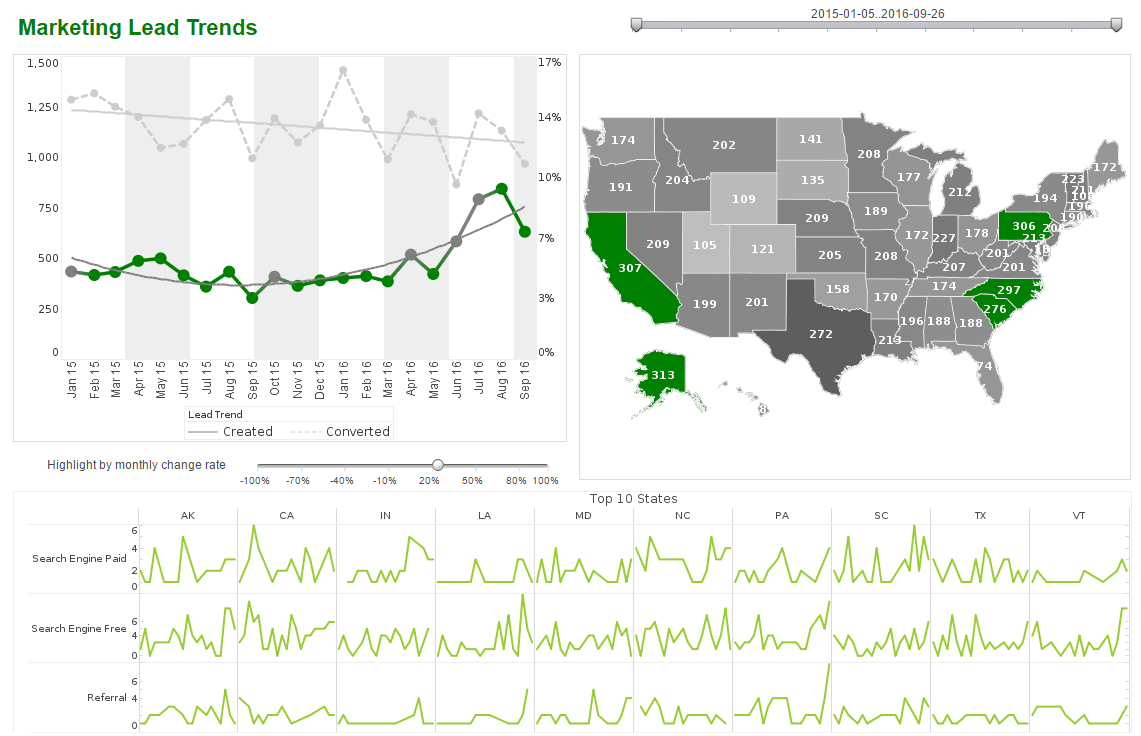InetSoft's CEO Joins a Discussion of Business Intelligence Strategy
A continuation of eBizQ's Business Intelligence in Action Podcast
Gold-Bernstein: OK. And last but not least at all, speaking about business intelligence strategy, Mark Andrews, Program Director of Data Warehousing for IBM. Welcome, Mark.
Andrews: Thanks, Beth. I think when you look at where IBM is going around the intersection of BI software and BPM, it follows directly behind the latest announcement we made about our next or third generation of business intelligence software. I think everyone on this call has referred to the same points that we’re really highlighting. It’s all about making business intelligence systems usable for more operational BI purposes.
To give you some quantifiable examples, a new acquisition is happening at every 20 minutes, and a new product is launched every 3.5 minutes. Really to be sustainable advantage there needs to be a business model or network change.
If you look at what BI vendors focused initially with their business intelligence tools, they were primarily focused on query and reporting to understand what happened in the past.
Second Generation Of Business Intelligence Solutions
The second generation of business intelligence solutions evolved into more visual analysis capabilities and data mining to understand why things happened and make recommendations for future action. But the next generation of business intelligence platforms is about making all information, all relevant information, available and to optimize each transaction. Whether it’s in the call center or in the field, whether you’re assisting a customer with a specific issue, taking an order or processing a claim.
It’s about making information available to leverage for your business activities and business processes. And of course, as everyone has pointed out, that necessitates a tight integration between your BPM environments which are managing your processes across the organization and your business intelligence services.
This also requires real-time reporting from aggregated and cleansed information and visualization tools. But it is important that these analytics capabilities are not just provided as a separate independent function. This business intelligence information must be made available as part of a particular business process or activity that a user is involved in, and within the context of the broader business activity.
| #1 Ranking: Read how InetSoft was rated #1 for user adoption in G2's user survey-based index | Read More |
And we’re also finding organizations need to start incorporating all the information across the organization, structured and unstructured information. And they need the ability to extract knowledge from other information sources.
And finally delivering on this next generation of business intelligence capabilities requires an infrastructure of capabilities that starts off with a dynamic data warehouse that can deliver on real-time database access with visual analysis and incorporate unstructured information, but also requires the ability to leverage search and text analytics for that unstructured information, the ability to aggregate and cleanse information from across the organization so it can be made available as a service to the different business processes.
It requires data modeling capabilities to be able to map the metadata across different departments of an organization to a consistent model that can be leveraged across an enterprise reporting solution. And it also requires master data management capabilities so you can ensure consistent metadata and use of master information to adjust customer data and product data across your different applications.
And then finally it requires an industry perspective of being able to apply all these capabilities to a particular domain. But as has been mentioned by several other so far, the key is enabling you to inject these services and capabilities directly into business processes, to enable your business process management environment to take advantage of this information as your users of business applications are driving decisions across your enterprise.
| Previous: BI Performance Management |


